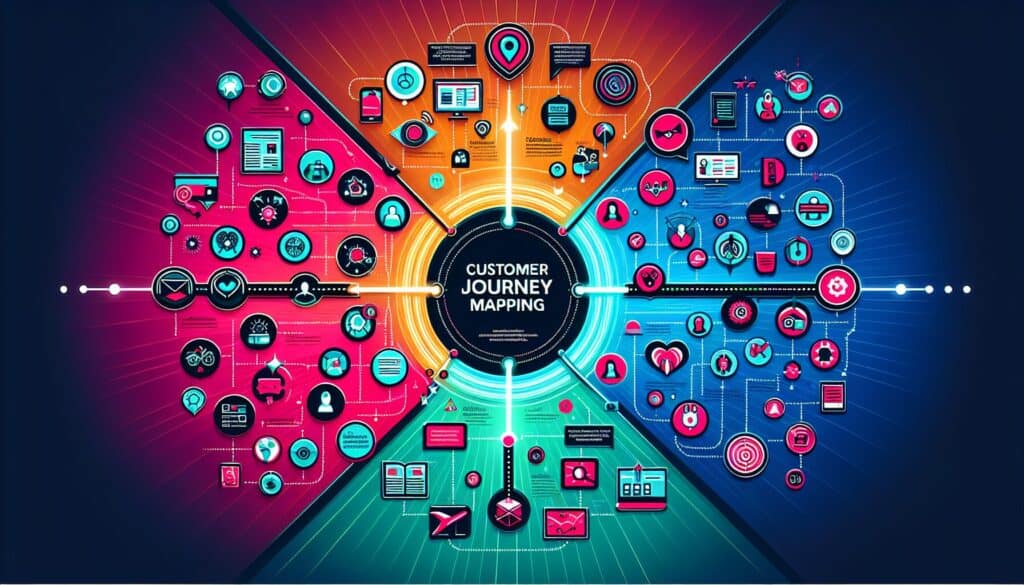从客户的角度出发,通过所有接触点和渠道,将客户与组织或产品之间的端到端体验可视化。
- 方法: 客户与营销, 经济学, 产品设计
客户旅程制图

客户旅程制图
- 持续改进, 客户体验, 客户旅程制图, 客户支持, CX, 设计思维, 流程制图, 用户体验(UX), 以使用者為中心的設計
目标
如何使用
- 包括研究和概述客户经历的各个阶段(如认知、考虑、购买、购买后)、他们在每个阶段的行动、想法、情感、痛点和改进机会。通常以可视化地图的形式呈现。
优点
- 全面了解客户体验;帮助识别痛点和关键时刻;促进整个组织对客户的同理心;突出提高客户满意度和忠诚度的机会。
缺点
- 研究和创建可能很耗时;如果做得不好,可能会过度简化复杂的旅程或不同的客户群;需要跨职能部门合作,以确保准确性和认同感;需要随着客户行为和接触点的发展而更新。
类别
- 客户与营销, 构思, 产品设计
最适合:
- 通过可视化分析客户与公司或产品的所有互动,了解并改善整体客户体验。
客户旅程映射在电子商务、医疗保健和技术等众多领域都有广泛应用,在产品开发和服务设计阶段都发挥着重要作用。这种方法通常由产品经理或用户体验设计师发起,涉及与市场营销、客户服务和研发等跨职能团队的合作,以收集有关客户互动的全面数据。例如,在电子商务环境中,绘图可以揭示客户在结账过程中遇到的障碍,从而设计出更有效的支付选项或更清晰的运输沟通--这两者都能提升购买体验。在医疗保健领域,了解患者的情绪和心理状态可以推动服务提供和沟通策略的改进。有效执行这一映射流程,不仅能将客户接触点可视化,还能作为迭代设计会议的框架,让团队根据已识别的痛点确定改进的优先次序。公司可以利用分析中的洞察力来完善其价值主张,通过提高满意度来培养客户忠诚度,并最终通过与客户的深入接触来推动业务增长。这种方法还能强化感同身受的企业文化,因为整个组织的利益相关者会更加了解客户的需求和行为,从而制定出更具凝聚力的战略,使所有部门都能为丰富用户体验而努力。
该方法的关键步骤
- 定义特定的客户角色。
- 确定并概述客户体验的不同阶段。
- 绘制每个阶段的客户行动图。
- 记录客户在每个阶段的想法和感受。
- 找出客户痛点和摩擦点。
- 突出关键互动和关键时刻。
- 发现客户生命周期中的改进机会。
- 以一致的格式将数据可视化,以便分析。
- 收集利益相关方对地图的反馈意见。
- 根据反馈和新的见解迭代地图。
专业提示
- 利用数据分析和客户反馈来确定不同接触点的趋势和相关性,确保地图反映以实际使用模式为基础的行为。
- 让跨职能团队参与整个绘图过程,收集不同观点,促进对客户体验和痛点的统一认识。
- 根据新的数据和不断变化的客户需求,定期重新审视和更新地图,确保其相关性并与组织目标保持一致。
历史背景
1960
1980
1983
1990
1995
2000
2010
1950
1980
1980
1986
1994
1995
2000
(如果日期不详或不相关,例如 "流体力学",则对其显著出现的时间作了四舍五入的估计)。














相关文章
肌肉骨骼不适调查表
多变量测试(MVT)
多元回归分析
动作捕捉系统
MoSCoW 方法
情绪中值测试